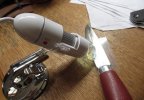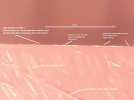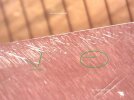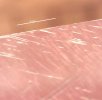Bluntcut,
I am confused. You say that the compound you are using is the white compound from USA Knife Maker. I went to their website and the white compound there was listed as 1200 grit, which would put it at about 3 micron on the FEPA-F scale for bonded abrasives or at about 4 microns on the ANSI scale. I looked around the web, and most suppliers of Al2O3 buffing compounds (either loose powder or bonded in a paraffin block like this) are using the FEPA-F scale. If your compound is 12-15 micron AND is the 1200 grit compound from USA KnifeMaker, that would put it near the micron sizes for the FEPA-P scale (coated abrasives) or the JIS standard. This doesn't make any sense to me! Where did you get the information that the USA KnifeMaker compound is 12-15 micron in size and what scale is it being graded on?
My guess usa bulk white-compound is 12um-15um in size mostly based on multiple sources of information & experiments:
1. From RichardJ paper wheel thread - it was conclusive that its white compound is about 15um in size. RichardJ use this bulk white-compound too. And I got the same result when using either compound.
2. Experiments used diamond, alumina (waterstone dust). For Diamond paste/suspension, 15um is best with minimal or no rounding. Alumina 10-16um best result but depend on pressure to avoid rounding.
3. usa black compound listed as 200-300 grit, it's quite rough like a 400 grit waterstone. therefore usa normalize their grit listing either in JIS or other grit scale for knives.
4. (recently) test Ryobi 2-5um white-compound, it was too fine, therefore resulted in rounding & burr (ok note: I was using 8oz of pressure, iirc). Ryobi stainless abrasive is about the right size (so it make more sense that it is much larger than 3um)
5. loosely crossreference with other white-compound for stainless. Mostly 2 types, fine (1-2um), medium/this-stuff (12-15um). I believe bark-river sells the fine version.
6. Looked through a 400x usb mag scope, seeing something look like abrasives to me. however I list this last because my usb scope sucks.
7. don't forget my wag hand-waving factor.
Obviously we're a bit OCD knifeknut!






